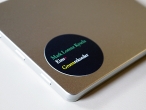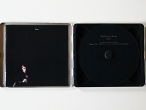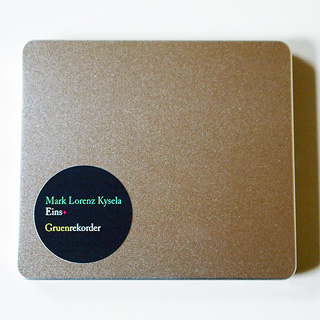
Eins + | Mark Lorenz Kysela
Gruen 120 | Audio CD > [order]
English | Deutsch
Mark Lorenz Kysela plays contemporary music for a instrumental soloist, sound extensions and tapes
1_Christoph Ogiermann | DRUCKBLÖCKE und ZEICHENAKKUMULATIONEN BCC
den arschlöchern die durch ihren egoismus und ihre angst den wunsch nach zärtlicher solidarität an der verwirklichung hindern
for saxophone, light, video, tape (2002), stereo radio version (Bcc) (2011/12) 9’32
MP3
Kysela – Soprano saxophone, performative noises
Ogiermann – tape and radio version
Recording: Gerd Anders, Bremen 2011
2_Thomas Stiegler | Treibgut VI
for soprano saxophone and tape (2012) 14’04
MP3
Kysela – soprano saxophone
Stiegler and Hannes Seidl – tape
Recording: Heiko Schulz, Leonberg 2012
3_Martin Schüttler | schöner leben 7
for saxophones and elektronics (2011) 11’15
MP3
Kysela – soprano- and tenor saxophone, foot controlled keyboard, plugs, cables, midi- and fuzz tone pedal, aerosol can
Schüttler – live-electronics und preparation of the samples
Text: Mara Genschel
Voice: David Foster Wallace
Recording: Sebastian Schottke, ZKM Karlsruhe 2012
4_Michael Maierhof | splitting 13
for alto saxophone with vibratory system and tape (2010) 13’03
MP3
Kysela – alto saxophone with splitter
Maierhof – tape
Recording: Sebastian Schottke, ZKM Karlsruhe 2012
5_Alvin Lucier | IN MEMORIAM JON HIGGINS
for clarinet and pure wave oscillator (1985) 19’56
MP3
Kysela – clarinet and sine wave generator programming
Recording: Kysela, Stuttgart 2012
6_Uwe Rasch | aus vierundzwanzig: drei
for soprano saxophone and tape (2010) 2’26
MP3
Kysela – soprano saxophone and tape ( iron sticks, drum sticks, pillows)
Rasch – shot in the piano
Recording: Rasch, Kysela, Amelie Haas, Bremen 2011, Stuttgart 2012
6 Tracks (70′18″)
CD (500 copies)
Eins +
Mark Lorenz Kysela, Saxophones and Clarinet
An artist on various saxophones and clarinet. Performs as a soloist, in combination with (live-) electronic or analogue enhancements and tapes. Mark Lorenz Kysela presents six completely different pieces: artistic individual positions focusing on the radical nature of musical language, on shaping and on the soloist.
Christoph Ogiermann
DRUCKBLÖCKE und ZEICHENAKKUMULATIONEN BCC
»Playing an instrument is an activity of a person requiring the full use of his body in a concrete situation. This can be exemplified by concentrating more on the act of generation by the players, independent of the resulting sound. In this case, keywords would be: instrumental choreographies, notation of action, movement that is independent of, or even opposed to the traditional playing of an instrument. «
In his compositions, Christoph Ogiermann tries to realise the presence he demands from the interpreter by means of directness and »exposure«: The aim is to blur the boundaries between the performers and the audience and establish a kind of musical „full contact“. »On several occasions, I have experienced that the nicest moments whilst experiencing art are those in which my resistance crumbles. I want to be overwhelmed by what reaches me unfiltered, « Ogiermann says.
In DRUCKBLÖCKE und ZEICHENAKKUMULATIONEN BCC, the presence of the interpreter is accentuated in a special way. Ogiermann is looking to find the maximal presence of »Hand-Fuß-Körperwerklichen« (»whole-body activity«): »The recording ensues from the performer’s perspective and very close to him, if not even from INSIDE him: so, everything is recorded from a VERY close range, from the performance and breathing up to the final concentration. The performance room is small rather than large, even a little claustrophobic. « Moreover, the piece is designed as a radio play: instead of the documentation of a performance, the installation of different materials has priority.
Thomas Stiegler
Treibgut IV
Simplicity, comprehensibility and the deliberate restriction of musical material are the constituent features of Thomas Stiegler’s compositions. The reduction on the level of material as well as on the level of structure leads to the concentration on one singular sound in Stiegler’s work, which he tries to free from the » burden of significance«. Since the mid-nineties, this is how compositions emerge that combine musical material with a reserved approach.
One can identify the repetition of musical-formal structures as the main characteristic of Stiegler’s economical use of material: small units as well as larger sections are integrated into the repetitive sequences.
In Stiegler’s series Treibgut, which is in development since 2008, the starting point consists of a repetition on the tone ‘e’. Treibgut IV for soprano saxophone and tape also begins with the repetition of the tone ‘e’ and follows a strict formal plan afterwards, which Stiegler used for the first time in 2004 in the piece vertikal I and again in 2010 in his radio play/audio piece Das Wetter in Offenbach.
Everyday noises and mixtures of sinusoidal tones resonate in time units of a minute or of 30 seconds, they alternate and overlap. In the radio play, the everyday noises consisted of surrounding sounds of a bike ride from Frankfurt to Offenbach, in Treibgut IV those were similar »secular« sounds like the rustling of a radiator, a valve radio, a water meter, the mechanics of a cassette recorder or the background noise of a backyard.
The saxophone superimposes itself on this layer of sounds with quiet and reserved actions – usually consisting of microtonal approach notes, always returning back to the initial tone ‘e’.
Martin Schüttler
schöner leben 7
A work which is disturbed as little as possible by external demands, compromises or concessions- that is how Martin Schüttler conceives the ideal requirements of his compositional work and by implication criticises their heteronomy that is accepted as inevitable more and more: the autonomy of the aesthetic process is subordinated to dispositions that regulate it externally. His cycle schöner leben on the other hand, which he has been working on since 2004, he sees as a model that emphasises the self-determination of the composer: »The pieces originate because I want to write them, because they refer to artists I cherish and would like to work with. In this sense, the music incorporates the conditions in which I want to work. In this respect, the title of this cycle should be taken literally: I would like to live in a more pleasant way, namely in the self-determination of my working environment and not in the realisation of an automatism, that increasingly seems without alternatives in the New Music Scene. «
The pieces belonging to the cycle schöner leben vehemently oppose in their tonal appearance what Peter Ablinger once called the »integrity of the external appearance. « Schüttler is not interested in performing »state of the art« New Music, which becomes obvious in the more or less skilled use of material that is considered to be »progressive«.His music refuses the mere demonstration of technical experience. Instead, he makes use of unwieldy, unrefined sonorities – of the potential of a »secular« materiality.
schöner leben 7 for saxophone and electronics also consists of such elements. » I draw on material that is already available, which I have accumulated and already sorted. I also use material from unsuccessful attempts. I randomly gather stuff, whilst surfing, reading, trying out things, listening, going out and whilst observing trivial procedures. Most of it is useless. It is disproportional, boring or kitschy, tasteless or unsuitable in other kind of ways. That is exactly what interests me, that is what I start working with. « schöner leben 7 is a composition that feeds on the unsuccessful and insufficient: The soundtracks from Youtube videos in which saxophone beginners present their moderate progress, are a central material. Schüttler uses these finds as raw materials that will be » decomposed, bleached and dissected. «
The subtitle of the piece – »Äußerlich auf dem Damm, aber verkorkst im Innern« (»Right as rain on the outside but messed up on the inside«) – is a quote from the story John Billy by David Foster Wallace. Wallace’s voice also appears, namely in the form of a »pseudo-songtext” « which was edited out of fragments from an interview with the author. On this basis, schöner leben 7 plays with the clichés of the genre pop song (beat, voice, verses, chorus, etc), however the proportions are overstretched, the functions neglected – Schüttler calls the result »a messed up song«.
Michael Maierhof
splitting 13
»According to me, a renewal within the New Music nowadays is only possible by including reality. This would be the opposite conception of music regarded as a vanishing point, a means of escape, or crafts, as it would be called in the fine arts. «
In his compositions, Michael Maierhof tries to turn away from the autonomous thinking space which New Music has secluded itself into more and more. The contemporary composer is confronted with the task to explore acoustic reality experience within the scope of aesthetic objects as well as acquire the appropriate form process of such a »transfer«. Accordingly, Maierhof’s conception provides for a drastic expansion of the current state of contemporary music.
It doesn’t matter »whether the composer deals with the established works of the master composers, with pop music, with urban soundscapes, with a working site, with a percussion drill or with the noises of a concert audience before the concert starts, when translating the acoustic reality experience. It doesn’t matter whether he uses electronic sound possibilities, scans the acoustic qualities of everyday objects, keeps developing the possibilities given by traditional instruments, analyses the toilet flushing in an ICE, examines the complex rhythmic sound file of a rustling plastic bag or creates an acoustic flow trace of a fridge. « Despite all the connections to everyday reality which Maierhof demands, in his music he doesn’t merely depict in the sense of »transplanting« everyday sounds onto the concert podium. The analysis of such sounds is solely a starting point for an explicit musical access.
Splitting is the most programmatic title in Maierhof’s series, which is in development since 1999. Acoustic experiments form the basis of this cycle for solo instruments which address the splitting of sounds into polyphonic sounds and aim at undermining familiar sounds. In splitting 13, the alto saxophone is provided with a »vibratory system«: a plastic cup filled with marbles is attached to the bell of the instrument. The blown notes cause this construction to vibrate which, as a consequence, produces complexes of sound that differ strikingly from the familiar sound you would expect from a saxophone. An additional layer in splitting 13 consists of a tape that reveals another perspective of the system constructed around plastic cups and marbles: in this case, the »stimulator« is not the saxophonist but the electromotor.
Alvin Lucier
In Memoriam Jon Higgins
»It doesn’t often happen that a composer appears, whose work is so convincing and who differs essentially from his contemporaries and predecessors that we are in need of rethinking our fundamental (and often unconscious) assumptions – whether we like it or not – and have to revise our >self-evident axioms< about music. « The composer James Tenney describes his colleague Alvin Lucier as an avant-gardist in the best sense. The path he had to take was by no means straightforward. When he travelled to Europe at the beginning of the sixties, he noticed that the musical progress there didn’t match his aesthetic expectations: »It was taken for granted by Stockhausen, Nono and all the other composers to write such music – for me on the other hand, it would have been mere imitation, I would have had to speak in a foreign dialect. When I arrived back home, I didn’t get any ideas until I came across the brainwaves amplifier… «
Two electrodes placed on the scalp, a differential amplifier and a bandpassfilter, borrowed from a friend who is a physicist, became the basis of a way of composing in 1965 which Alvin Lucier was able to realise his individual perception of music with. While experimenting with the equipment, he found out that the alpha waves contained in the human brainwaves can be converted into audible frequencies with adequate amplification. Lucier used the energy that was set free to get different kinds of percussion instruments to reverberate by stimulating them with the help of speakers placed in front of them. Music for Solo Performer is the title of the piece that became the initial point of Lucier’s ideal of a »physical music« and which experienced all kinds of reshaping in the subsequent period.
»I had to find a way to compose for acoustic instruments which resembled my former works. I saw working with the phenomenon of beat as a chance to realise my ideas. Beat is a physical process, not a poetic one: the sounds perform audible work. «
With Crossings for small orchestra, Lucier created his first composition on the basis of beat phenomena in 1982. Here, the tones of the orchestra instruments cross the consistently rising signal produced by a sine wave generator. In Memoriam Jon Higgins, a piece that was composed two years later, follows the same principle: The vibrations of a stable clarinet tone and the vibrations of a slowly rising and barely audible sinus tone meet. Beats develop which are neither produced by the clarinet nor by the tone generator. What happens here happens on its own: in between.
UWE RASCH
aus vierundzwanzig: drei
For several years now, Uwe Rasch has been working on the project aus vierundzwanzig – a »heap of material« (Rasch) that refers to Franz Schubert’s 24-part lieder cycle Die Winterreise. This collection of materials can be divided into modules that can be combined in different ways, depending on the space and performance situation.
Rasch’s reference to Schubert’s Winterreise doesn’t concern the contents: »I start with a deliberate misunderstanding of the romantic approach: the disappointed romantic love doesn’t offer an inducement for this work and Wilhelm Müller’s texts only form a framework of connotations, starting points or resistance in search of music. « Instead, the activity of the protagonist is adopted: the aimless wandering of a shaken human being, the »coldness of being on the road«, as Rasch calls it.
aus vierundzwanzig: drei refers to the third song in the Winterreise: »Gefror’ne Tränen« (frozen tears). Here, the traveller is completely isolated, in despair and doomed in the cold world. His tears are unable to take on the cold – they turn into ice themselves. Uwe Rasch extracts the »wedge-shaped« staccato-accents, which are followed by long tenuto notes, from the song. Rasch takes both these elements out of the semantic-compositional context of the song and puts them together in new contexts.
Michael Rebhahn
Translation by Katie Hardwick
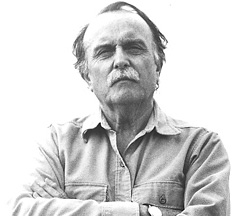
Alvin Lucier
The American Alvin Lucier, born in 1931, is one of the most distinctive representatives of experimental music. In his works, which are located between performance, composition and science, Lucier explores acoustic phenomena and their effect in space.
In his best-known piece I Am Sitting in a Room (1969), Lucier plays back an audio recording he recorded himself in a normal-sized room and records it at the same time. This procedure is repeated until the voice on the recording can’t be understood anymore, only the multiplied room-acoustic remains audible. In his piece Music for Solo Performer (1965), Lucier uses a device that amplifies brainwaves and turns them into acoustic vibrations. With those brainwaves, he manages to get the membrane of connected speakers to vibrate so much that it enables him to make percussion instruments reverberate.
In his sound installation Empty Vessels, Lucier lets several people recite a text into hollow bodies, such as a barrel, a vase, or an ostrich egg in order to change and distort the voices in a natural way. Lucier wants to avoid artificial amplification of voices by electric devices in many of his works. A series of chamber pieces and orchestral works that deal with pure sounds in a minimalist way are also part of his works. Thus he created a piece, in which musicians generate sounds on different instruments and try to get snare drums to reverberate, which are spread across a room, only with help of the generated sound waves. In another piece, the musicians accurately try to imitate sounds randomly created by feedback of a speaker, which however, never succeeds entirely.
In fact, the sounds that were ‘left to themselves’ in Luciers work always have a mysteriously ‘expressive’ quality. “Sometimes I think that speechless nature is talking to us here. Indeed, in the works of Alvin Lucier, it is recognisable that nature has a very eloquent voice.” James Tenney
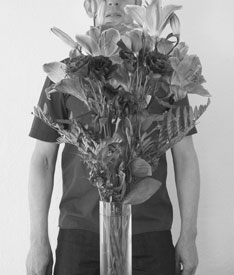
Michael Maierhof
Born 1956, self-employed composer and improviser, lives in Hamburg. He studied music and maths in Kassel as well as philosophy and art history in Hamburg. First compositions in 1989. Since 1990, the emphasis lies on room related music for ensembles of different instrumentation, on the development of preparation and undertone technology for string instruments as well as on research on the gyration on different surfaces. He is working on a music which isn’t organised according to pitch levels.
He held lectures about his music at Trinity College/Dublin, at the State University of Music and the Performing Arts Stuttgart, at the Mozarteum in Salzburg, at the California Arts Institute in Los Angeles, at the Centre for Contemporary Music in Dublin, at the Central Conservatory of Music in Beijing/China and at the University of Music Freiburg.
Has had many international performances.
Various prizes and scholarships, latest prizes: 2008 Prize for composing of the provincial capital Stuttgart, 2009 Prize for composing in the contest “ad libitum”, 2011 scholarship holder of Villa Aurora in Los Angeles.
Cellist in the quartets “NORDZUCKER” and “Stark Bewölkt”.
Co-founder of the association for current music Hamburg. Member of stock11.
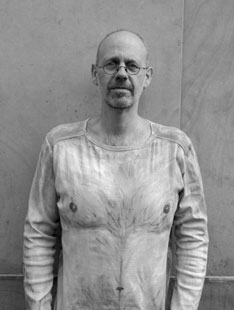
Christoph Ogiermann
Born 1967. Began composing in 1990 at the instigation of Erwin Koch-Raphael and has been writing music ever since. Collaboration in dance and theatre projects in Bremen, Berlin and Düsseldorf. He is active as speaker and singer and is violinist and pianist in the fields of free improvisation and European art music.
Completed his composition studies with Younghi Pagh-Paan at the University of the Arts Bremen in 1999/2000. Further important musical and philosophical studies with Georges Nicolas Wolff and Nicolas Schalz.
Stay at the Archivio Luigi Nono/Vienna in the winter of 1999/2000. He was guest lecturer for composition and improvisation in Pitea/Sweden in 2002 and guest composer at the Institute of Electronic Music and Acoustics in Graz as well as guest in the studio for electronic music in the Technische Universität Berlin in 2003.
He was scholarship holder of the Heinrich Strobel Stiftung in Freiburg im Breisgau and beneficiary of the Cité des Arts in Paris in 2005/2006.
Since 2007, he is father of twins.
In 2008, invitations as lecturer for composition and electronics from Edinburgh and Querétaro.
2009, guest at the Akademie Schloss Solitude.
2011, prize winner of the composing competition “ad libitum” of the Winfried Böhler Kulturstiftung.
Has a teaching assignment in “musical performance” at the University of Hildesheim.
2012, he won the art award from the Art Academy Berlin (music advancement award).
He was co-founder of the ensemble x-pol-batterie and of the groups “fünf”, “Traurige Tiere” and “KLANK”. He is a member of the ‘projektgruppe neue musik bremen’ and arts director of the series REM for electronic music.
Member of stock11.
Lives in Bremen.
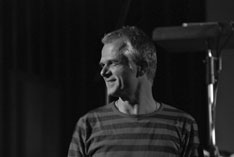
Uwe Rasch
Born 1957. Studied at the University of Bremen and at the University of the Arts Bremen in Rolf Riehm’s composition class, Frankfurt. Scholarship holder of the University of the Arts Bremen. Freelancer at Radio Bremen. Lecturer at the University of the Arts Bremen, music teacher, co-founder and collaborator of the ‘projektgruppe neue musik bremen’.
2001, prize winner of the international composing competition of the Freiburger Elisabeth-Schneider-Stiftung. 2007, invitation to the international workshop in the Cselley-Mühle in Oslip/Austria. 2009, prize winner of the composing competition “ad libitum” in Stuttgart.
Has worked with national and international musicians and ensembles such as the following: Klangforum Wien, Ensemble Aventure, Phoenix Ensemble Basel, Ensemble L’art pour l’art, the Kammerphilharmonie Bremen, Il Virtuosi della Fenice , Trio diritto, Michael Riessler, Gaston Sylvestre, Malcolm Goldstein and many more.
Commissions for the WDR (West Deutscher Rundfunk) and participation at festivals: Eclat-Festival in Stuttgart, Pro musica nova in Bremen, Konzerthaus Wien and others. Member of stock11.
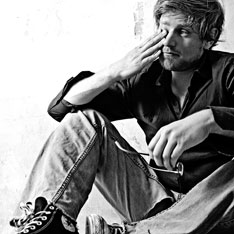
Martin Schüttler
Born 1974, studied composition with Thomas Bruttger and Diego Feinstein in Kassel and with Nicolaus A. Huber and Ludger Brümmer at the University of the Arts Folkwang in Essen. Has worked as a guest artist at the ZKM (Center for Art and Media Karlsruhe) between 2000 and 2004. Furthermore, Schüttler is lecturer for music theory at the Frankfurt University of Music and Performing Arts and at the Philipps-Universität in Marburg. He held guest lectures and speeches at the Berlin Weissensee School of Art, at the Internationale Ferienkurse für Neue Musik, Darmstadt, and at the Takefu International Music Festival, Japan, to name but a few.
Martin Schüttler has worked with numerous well-known artists and ensembles, with the Ensemble Modern, Evan Parker, the Trio Accanto, with the Neue Vokalsolisten Stuttgart, suono mobile and the RSO Frankfurt, amongst others. His works are regularly performed at international festivals and concerts within Europe but also in North America and Japan.
He received commissions and chances to perform his music at the Takefu International Music Festival, at the Internationale Ferienkurse für Neue Musik, Darmstadt, at the Donaueschinger Musiktage, at the Tanztheater International Hanover, at Dartington Summer School, at the Kaaitheater in Brussels and at the Theatre Mohammed V Rabat/ Morocco.
Schüttler has been awarded numerous prizes for his compositions, the prestigious Kranichsteiner Prize for composition of the Darmstädter Ferienkurse in 2002, being one of them. They range from pieces as a soloist or for chamber music ensembles, to pieces for choir, orchestra, live-electronics and productions with tape music to sound installations, media art, theatre and film music, as well as to music for dance performances.
In 2009, a CD with music by Martin Schüttler was released in the series Edition Zeitgenössische Musik from the German Music Council. Member and co-founder of stock11.
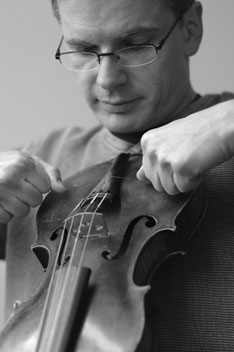
Thomas Stiegler
Born 1966 in Meschede/ Sauerland.
1987-1993, study of medicine in Cologne, Freiburg and Frankfurt/Main
1991-93, study of composition in Freiburg with Emmanuel Nunes and Mathias Spahlinger.
1997, won first prize at the international composition competition Boswil (for quasi una fantasia)
2007, portrait CD in the series from the German Music Council.
Won first prize at the Ensemblia-Competition Mönchengladbach (for Und,Ging,Außen,Vorüber,IV)
Since 1994, works as assistant physician, since 2001 as senior physician at the Klinikum Offenbach (internal medicine/ nephrology). His strength lies in laying dialysis catheters. Lives in Frankfurt/Main.
Mark Lorenz Kysela wishes to thank all folks involved in this project, Jörg Koch, his parents and his backers:
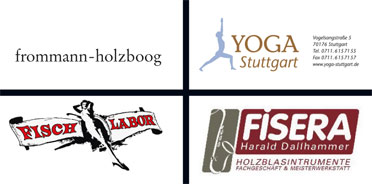
Cover Picture: Rolf Schoellkopf
Mastering and corrections: Heiko Schulz
Sound Art Series by Gruenrekorder
Germany / 2013 / Gruen 120 / LC 09488 / GEMA / EAN 4050486089590
Susanne Benda | Stuttgarter Nachrichten
Klänge für Saxofon und Elektronik
Laute Schritte nähern sich. Geräusche, harte Schnitte. Was macht Mark Lorenz Kysela da? Spielt er Saxofon oder Klarinette, oder spielt er mit Gegenständen? Was ist realer Klang, was das Ergebnis elektronischer Verfremdung? „Mark Lorenz Kysela spielt aktuelle Musik für einen Instrumentalsolisten und klangliche Erweiterungen“, beschreibt sich die CD „Eins+“ selbst. „Abenteuerreisen für Hörende“ hätte man die Einspielung auch nennen können. Im Mittelpunkt der Stücke von Christoph Ogiermann, Thomas Stiegler, Martin Schüttler, Michael Maierhof, Alvin Lucier und Uwe Rasch stehen die Lust am Spiel und am Experiment. Nichts zum Nebenbei-Hören, eher etwas zum
Hineinfallen. Eine schöne, sehr andere CD.
Thomas Shrubsole | The Sound Projector
Playing The Rekorder
Eins +, translated: solo saxophone (soprano mostly, alto once) and clarinet, plus electronics, tapes, modifications etc.
Gruenrekorder are a label I associate mainly with thoughtful, diverse releases of field recordings (1). In this release they apply some of the transparent listening techniques familiar from those recordings of the world around us to the slightly more rarefied chambers of modern classical music. Or ‘new music’ as it prefers to be known in the well-annotated booklet.
Mark Lorenz proves a quietly versatile performer on this showing, selecting a variety of compositions which showcase engagingly different approaches to his implicit curatorial themes. The six different composers’ works come across as carefully selected and played with a quietly confident dedication to transparency and thoughtful interpretation. No instrumental grandstanding or showboating, as such, is indulged in (by him at least), the key here is quiet and active observation and listening. The ideas that emerge from the appealing air of modest studiousness are of pauses, spaces and silence. Of the internal and the external, of electronics and acoustics and of what is generated between the interactions of those elements. Most of all about technique, extending that technique and then subsuming that extended technique as a performer back into the music in such a way as to most effectively realise what each composition requires.
The two opening tracks contain perhaps the most pleasantly surprising pieces, those by Christoph Ogiermann and Thomas Stiegler. You do get an Alvin Lucier piece, later. But, really, big Al’s gonna bring the Sine Tones. We all know it, so surprising it ain’t, exackkerly. However, thee opening pieces are a species of or related to hörspiel – or radio plays. Although hörspiel sounds so much more different, so appealing… Anyway, both share a concern with materials, textures, musical episodes and scenes, constructed of the most basic yet texturally pleasing materials, a sine tone, a softly played soprano saxophone, a snatch of what sounds like a foley recording of singing birds…
Indeed, Ogiermann, the first composer showcased, professes an interest in approaching his composition as an ‘installation of different materials’. This almost documentary quality is backed up with his description of the physicality of a “whole body” involved in playing the saxophone and a “concrete situation”.
Subtle, like a Japanese tea ceremony, the sine tones and delicate beating microtones slowly seep and steep into the listening environment, colouring the listening environment a delicate, fresh transparent green (recorder).
An image that has inspired me in the past and that I found returning unbidden to my mind like the gentle waft of a saxophone through an old apartment is the combination of tapes, filmic editing and saxophone found in Francis Ford Coppola’s The Conversation. Here, too, there is a conversation, a subtle exposition and practical demonstration, between the different pieces. The sine tones both in Thomas Stiegler’s and Alvin Lucier’s compositions. The electronics, the radio play format.
Only Martin Schuttler’s composition, the third track, is a little more problematic, but it still works as a part of this conversation and contrast. The electronic elements, played by the composer, are twitchy to an almost parodic degree and coupled with sententiously intoned narration. Supposedly ‘kitschy’ ingredients, amateur (remember: lover) videos of progress in mastering the saxophone nabbed from random youtubers are used as raw material. This does raise questions about status and how the composer views himself and his work and indeed the trained contributions of Kysela regarding hierarchical institutions and the apparatus of new music (there are plenty of lists of awards received and academic achievements alongside the thought-provoking critical notes).
Rather tight-arsed and modernisms result – not helped by the MIDI drums – with unanswered question marks about attitudes towards ‘untrained’ musicians. Perhaps the ‘enfant terrible’ angle is overstated in the notes (although this seems to be part of the composer’s aim and is intended to contrast with what he views as reductive compositional orthodoxies within the narrow frame of reference of academic, institutionally sponsored ‘new music’ – presumably exemplified for him by other pieces on the CD?) however, this stance rather ironically reveals more similarities and shared origins with that supposed state of affairs than differences. At least he’s trying, though, I guess, and as I said, in the context of this set it works as a bit of contrast and does offer yet another variation on the themes being gently and politely probed.
From then on we get Splitting, an exercise in polyphony, a ‘vibratory system’ (consisting of a plastic cup and marbles) and tapes. Guttural didgeridoo buzzes from basic materials ensue. From Lucier we get a lucid formalism, and the whole thing finishes with a short deconstructionist piece based on Schubert, perhaps with a faint touch of the Maurizio Kagels.
All in all a good package, well selected, played and presented in the studious classical tradition and will sit happily on the next shelf along from your Stockhausen and Xenakis reissues.
All good. Next!
(1) Although they have also released plenty of instrumental and computer music in their time, I see through Discogs.
link
Brian Olewnick | Just outside
Six compositions by different composers performed by Kysela on clarinets and saxophones with electronic and tape accompaniment.
1) Christoph Ogiermann – Druckblöcke und Zeichenakku-Multationen BCC. In which hyper-physicality is paramount, using exceedingly close miking, capturing every gestural sound in high res detail, Kysel cooperating by out Küchening Küchen in terms of materiality. Scraped footsteps, heavy breathing, visceral saxophonics, ultimately wispy contrails. An impressive display of the composer’s desired „whole-body activity“, if not my favorite approach to things.
2) Thomas Stiegler – Treibgut IV. A thoughtful piece, constructed in segments of 30 seconds or a minute, those portions consisting of a soprano saxophone playing a simple melodic line or held note (sometimes multi-tracked), steady sine tones and recordings of „secular sounds“ (valves, meter, yards), all shuffled and irregularly overlaid. Though livelier, it has the control of a Tom Johnson piece. Also I get the sense of turning over a series of cards, one two or three at a time, revealing images that are similar to an extent but varied, each set self-realted. I like this one a lot.
3) Martin Schüttler – schöner leben 7. For saxophone and electronics, the latter consisting of, in good part, „soundtracks from You Tube videos in which saxophone beginners present their modest progress“. Schüttler is interested in non-professionalism, detritus, assemblage worked up from discarded, banal material. The results are disjunctive enough, reminding me of something Zorn might have come up with circa „Locus Solus“ had he the available technology. I don’t mean that as a slight–the piece works well, a kind of combine, if not a paradoxically transcendent one.
4) Michael Maierhof – splitting 13. Using a plastic cup filled with marbles inserted into the alto saxophone’s bell, melding it with other such cups being electronically stimulated on their own. The music is, not surprisingly, buzzy but also very strained and, well, unpleasant. Which I’m sure fulfills Maierhof’s intentions. I’m reminded a bit of Thomas Ankersmit’s excruciating (and wonderful) experiments of some years back. Similarly here, the listener has to accept a large degree of discomfort, to give up searching for comfort zones of any sort. I found it worthwhile, but its a very tough go.
5) Alvin Lucier – In Memoriam Jon Higgins for clarinet and pure wave oscillator. Well, I’m a complete sucker for this stuff. A relatively early (1985) work, Lucier does his trademarked thing, her having a clarinet playing steady tones against slowly moving sine waves, developing beats that neither instrument is producing on its own but which are being created inside the ear of the listener. Kysela plays cleanly here and the piece takes off as Lucier’s tend to do.
6) Uwe Rasch – aus vierundzwanzig: drei. A short piece (about 2 1/2 minutes), loosely inspired by Schubert’s „Die Winterreise“, not that you’d recognize any association on hearing–delicate, flitting soprano sax against clunking, intentionally awkward percussion. Rather humorous even without the reference though all snickering is brought to an end by a frowning gong smash.
An enjoyable recording, extremely well played, covering a wide range of contemporary composers. What more could you want?
Holger Adam | testcard #23
Drei Veröffentlichungen vom Frankfurter Gruenrekorder-Label, jede versehen mit höheren akademischen Weihen und ebenso konzeptuell aufgeladen. Kopf-Hörer-Musik. An begleitenden Texten zu den Veröffentlichungen mangelt es folglich nicht, und es ist in der Tat gut zu wissen, was sich jeweils hinter dem, was man zu hören glaubt, verbirgt. Dabei sind, zumindest im Falle von David Rothenberg und Budhaditya Chattopa dhyay, bereits die Titel sehr sprechend: Rothenberg hat buchstäblich live im Feld mit allerlei Insekten Musik gemacht. Begleitend zur CD ist auch ein Buch erschienen: »How Insects Gave Us Rhythm And Noise« – und die Erfahrung einer beeindruckend mikrotonalen Klangumgebung hat vielleicht der eine oder die andere selbst schon gemacht: in der Wiese liegend, Grillen lauschend. Rothenberg hat die Klänge dieser und anderer Insekten eingefangen, sie als Musik hörbar kontextualisiert und um eigene Töne dazu ergänzt. Das Zusammenspiel der entomologischen Orchester mit den menschlichen Gastmusikern klingt zumeist abwechslungsreich und beein druckend, an der einen oder an deren Stelle spielen die Menschen etwas zu gefällig zum feingliedrigen Noise der Insekten – an den Tieren liegt es nicht! Budhaditya Chattopadhyays Eye Contact With The City ist das Pendant zu einer Video-/Klanginstallation, die Bilder und Sounds aus den Straßen Bangalores ausstellt. Nachbearbeitet erinnern die sphärisch verwehten Klänge allerdings nur noch entfernt, wie durch Fensterglas wahrgenommen, an die Geräusche einer Zehn-Millionen-Metropole. Ich nehme an, dass die Bilder zu den Klängen der Installation hier und da nicht zueinander passend präsentiert wurden, was den Verfremdungsefekt verstärken würde. Die Recordings auf Eye Contact With The City lassen zumindest keine eindeutige Zuordnung der Geräuschquellen mehr zu. Die Stadt als Klangkörper verschmilzt zu einer Industrial-Noise-Klangfläche, die dazu einlädt mit den Ohren erkundet zu werden. Wenn die Ohren nach den Insekten und der Stadt noch nicht müde sind, dann gibt es mit Mark Lorenz Kyse las Eins+ u. a. noch zu hören, wie der Musiker klingt, wenn er Musik macht. Mikrofone rücken Kysela, der auf diese Weise ein kompositorisches Konzept des Komponisten Christoph Ogiermann realisiert, so sehr auf die Pelle, dass nicht nur das Instrument und die Klänge die es erzeugt, gehört werden können, sondern auch der sich mit dem Instrument bewegende Körper des Musikers. Insgesamt steht der physische Akt des Musikmachens im Zentrum, nicht so sehr das damit einhergehende klang liche Ergebnis. Dieser Logik, nach Klängen diszipliniert unter verschiedenen Bedingungen und nach Maßgabe aller vorhandenen Möglichkeiten der Instrumente zu forschen, ohne ein Klangerlebnis im Sinne einer »schönen Musik« zu beabsichtigen, folgt Eins+ über 70 Minuten lang, in denen Kysela noch fünf weitere Kompositionen von Alvin Lucier, Uwe Rasch und drei weiteren Vertretern Neuer Musik realisiert. Eine Herausforderung, Meta-Musik zu der man das beiliegende Textbuch studieren muss, um eine erweiterte Vorstellung davon zu erhalten, was es jeweils zu hören gibt. Keine Musik für jeden Tag, aber das ist auch sicher mit keiner der drei Veröffentlichungen beabsichtigt.
link
Martin P | Musique Machine
Well, this is one of those releases that I could possibly never stop writing about – but instead, I’m going to say very little indeed.
Exquisitely packaged in a metal tin, with a glossy booklet full of liner notes and biographies, “Eins+” is a collection of compositions performed primarily on clarinet and various saxophones by Kysela. These compositions come from six names, all but one new to me: Christoph Ogiermann, Thomas Stiegler, Martin Schuttler, Michael Maierhof, Alvin Lucier and Uwe Rasch. (No prizes for guessing who was previously known to me…) The booklet explains each composition comprehensively and whilst I really do like releases that come with words, I must admit that in this case they initially hindered my listening. I’m from the school of thought that believes its the sounds that must ultimately be judged; and often something thats interesting and clever on paper, doesn’t translate into anything you might want to actually listen to. So, I found it more rewarding to just listen to the pieces, then return to the words later.
The contrast between the word-play of the composition notes and the pure sensual beauty of the sounds is often very marked. The obvious “earthiness” of a solo acoustic instrument, easily cuts through whatever words the composer has built on top of it. This is evident across all the pieces, but particularly on Maierhof’s “splitting 13”; where the saxophone explores such a physicality in sound, that words aren’t needed. (Indeed, one of the few negative elements of “Eins+” is the use of “preset” keyboard sounds on Schuttler’s “schoner leben 7”; these give a sometimes “amateurish”, cartoonish feel to the staccato jabs of the work – though later on, there’s a very tense, eerie passage pitting keyboard drones against sax.) All of the pieces stand up on their own, as sound; presenting a comprehensive mix of cut-ups, drones, field recording techniques, tape-work, noise and electroacoustic techniques.
I realise that the above is very cursory, but its really because I don’t think “Eins+” needs to be “sold” to you. Its simply a great album. It contains a truly wide range of explorations of what a sax or clarinet can do, aided and abetted by tapes and electronics; with just as much attention paid to composition and performance, as to recording techniques and environments. Its unashamedly “difficult” at times, but also has the starkly beautiful simplicity of Lucier’s piece “In Memoriam Jon Higgins”. Its not an album of easy pleasures – it rewards careful listening and is at times overtly “academic” – but the sheer visceral pleasure of the sounds and their intelligent deployment make it unmissable.
link
Dietrich Heißenbüttel | Neue Zeitschrift für Musik 05/2013
In den sechs Werken der CD verbindet Mark Lorenz Kysela (geboren 1971 in Stuttgart) geräuschhafte Grenzbereiche des Saxofonklangs mit elektronischen Materialien. Umgebungsgeräusche einzubeziehen impliziert dabei auch eine Kritik der Verhältnisse zwischen Komponist und Gesellschaft, Interpret und Publikum.
Allerdings lässt sich der «Vollkontakt» zum Publikum, den Christoph Ogiermann einfordert, in der Aufnahme allenfalls simulieren. Ogiermann löst das Problem, indem er die Hörperspektive in das Innere des Sopransaxofons verlagert, sodass Atem- und Klappengeräusche aus nächster Nähe erfahrbar werden. Die «Präsenz des Interpreten» artikuliert sich in den einleitenden Schritten des Saxofonisten auf ein imaginäres Podium in hektischen Atemgeräuschen. Diesen Zeichenakkumulationen des Titels stehen Druckblöcke gegenüber, eine Folge obsessiver, in sich bewegter, aber in ihren Umrissen statischer Klangflächen, abrupt unterbrochen von langen Pausen. Am Ende fiepen Sinus- und Saxofontöne um die Wette, bis das Stück leise ausklingt.
Thomas Stiegler rhythmisiert Alltagsgeräusche. Das ergibt einen reizvollen Klangteppich, unterbrochen gelegentlich vom homogen runden Klang einfacher Sinuston-Intervalle. Dem Saxofonisten bleibt dabei kaum mehr übrig, als den elektronischen Zuspielungen versetzt eine zweite Ebene einfacher, gedämpfter Tonfolgen oder Umspielungen des zentralen Tons e hinzuzufügen.
Martin Schüttler beginnt mit einem sehr hohen, von Knackgeräuschen unterbrochenen Zirpen und geht dann, nach einem Sinus-Akkord in Mittellage, zu einer kratzenden Attacke auf die Gehörnerven über, sodass sich die Frage stellt, ob der Titel schöner leben 7 als pure Ironie zu verstehen ist oder sein Wunsch nach selbstbestimmtem Komponieren nicht in letzter Instanz eine Verabschiedung vom Publikum bedeutet. Der fragmentierten Realität der heterogenen instrumentalen und elektronischen Klänge fügt die Stimme des Schriftstellers David Foster Wallace einen ebenso fragmentierten weiteren Kommentar hinzu.
Michael Maierhof arbeitet mit Murmeln in einem Plastikbecher – im Schalltrichter des Altsaxofons ebenso wie maschinell durchgeschüttelt. Dies als «drastische Erweiterung des Materialstands zeitgenössischer Musik» zu bezeichnen, wie dies Michael Rebhahn im Booklet tut, erscheint denn doch als großkalibrige Rhetorik. Wie weit der Gedanke trägt, zeigt sich in der Aufnahme, wo der optische Überraschungseffekt entfällt: Eine gewisse Monotonie des Hörerlebnisses ist schon nach weniger als 13 Minuten zu bemerken.
Noch weiter herunterschalten muss man bei Alvin Luciers In Memoriam Jon Higgins, das über fast zwanzig Minuten hinweg meditativ Schwebungen von Sinus- und Klarinettentönen auskostet. Kurzweilig beginnt dagegen Uwe Rasch, der die «gefrorenen Tränen» aus Schuberts Winterreise mit Eisenstange und Kissen zerhackt, bis der Komponist selbst einen Schuss in den Flügel abfeuert, der dann noch lange 47 Sekunden verhallt.
Wonderful Wooden Reasons
If I was ever to add awards to WWR the one for excellence in packaging each year almost certainly go to Gruenrekorder. They really do send some sublime looking things my way and the metal tin that houses ‚Einst+‘ is a beauty.
The label has a few strings to it’s bow and as such you’re never quite sure, until you hit the play button which aspect has made an appearance. this time out it’s the turn of the sound art series with a collection by German saxophonist and clarinetist Kysela.
Here he provides interpretations of pieces by a variety of modern composers such as Christoph Ogiermann, Thomas Stiegler, Martin Schuttler, Michael Maierfof, Alvin Lucier and Uwe Rasch. Of the 6, I must admit it is only Lucier with whom I’m familiar so it’s with excited ears I make the plunge.
Musically it’s utterly rooted in a very modern sensibility. Sonically it’s, for the most part, centred around Ksela’s instruments of choice which allows the proceedings a sense of familiarity albeit on subject to occasional lunges in unexpected directions along with the sometimes sudden, sometimes subtle interjections from the array of other sound sources.
For me it is the Lucier piece that is the most engaging as it’s drones are most close to my heart but the rest are never less than intriguing and often are far more.
Modern composition isn’t an area of music that I really ever have that much contact with but is certainly one that holds my interest on the rare occasion that I do and this was an unexpected treat that has gone round and round on my player for the last week as I tried to get to grips with it.
link
freiStil – Magazin für Musik und Umgebung | #50
Hält man eine CD des Labels Gruenrekorder in Händen, so vermutet man darauf field recordings, meist der feinsten, subtilen Art. Nicht so in diesem Fall. Mark Lorenz Kysela ist Saxofonist. Ein Saxofonist, der sich neuer, neuester Musik widmet, der in seinem Suchen nach neuen Werken dem Experiment zuneigt. Und der als Musiker und Interpret keine Scheu davor hat, live-elektronische oder auch akustische Zusatzinstrumente miteinzubeziehen. Entsprechend hat er auf seiner Solo-CD Kompositionen aus den vergangenen Jahren versammelt, sechs an der Zahl, die sich auf unterschiedlichste Art und Weise dem musikalischen Experiment widmen, deren sechs Komponisten klangliche Facetten des Saxofons untersuchen, die aber auch mit diversen Klangkontexten, sprich, Ergänzungen oder (zusätzlich aufgenommenen oder live-elektronisch generierten) Klangumgebungen experimentieren. Michael Maierhof mit Splitterklängen, hervorgerufen durch Plastikbecher als Präparationen zum Beispiel. Oder Christoph Ogiermann, Thomas Stiegler und Uwe Rasch mittels Zuspielungen. Oder aber das mit Abstand älteste Stück aus dem Jahr 1985 des Amerikaners Alvin Lucier für Klarinette und Sinusgeneratoren. Und irgendwie meint man doch immer wieder in Bruchstücken auch so etwas wie field recordings, wie den Alltag, die Umgebung, wahrzunehmen. Eine Sinnestäuschung? Und/oder die berechtigte Verwischung der Grenzen zwischen Kunst und Realität im Klang? Auf jeden Fall: Hörempfehlung. (pol)
Idwal Fisher | IDWAL FISHER
I’ve been looking at Dave Foster Wallace’s book Infinite Jest for some years now. Since it was published in 1996 in fact. I used to pick it up in the Bradford branch of Waterstones and marvel at its sheer size [all 1,067 pages of it] and wonder if one day I’d find the time, or the courage, to read it. Seeing as how I’ve now managed to club Pynchon into a corner with a knotty stick I decided the time was right and finally bought a copy.
Imagine my surprise then, dear reader, to find Wallace’s voice on the Mark Lorenz Kysela’s release ‘Eins+’. There he is on Martin Shüttlers composition ‘Schöner Leben 7’ in what I assume is one of his readings along with samples of people practicing their sax solos as culled from Youtube. Its almost like he’s begging me to read the damned thing.
On ‘Eins+’ Kysela’s plays various Sax’s, clarinets and assorted oddments in thee modern composition style, interpreting the work of several modern composers; Christoph Ogiermann, Thomas Stiegler, Michael Maierhof, Alvin Lucier, Uwe Rasch and the aforementioned Shüttler.
A casual read of the enclosed booklet leaves you in no doubt as to what kind of territory we’re entering here ‘…the autonomy of the aesthetic process is subordinated to dispositions that regulate it externally’. Erm yeah. As ever its whats coming out of the speakers that count and what does emerge is truly captivating. On Michael Maierhof’s ‘Splitting 13’ a plastic cup filled with marbles is inserted into the mouth of an Altosax the result being a series of shrill and dissonant vibrations capable of shattering anything brittle. Tremendously painful and piercing rattles that are followed by silences and low undertones that are the sort of hums you get from digeridoos. A bit like being given electric shocks and then a nice cup of tea in rotation. The entire 70 minute trip begins with a walk to the performing area and a Sax so closely miked as to be able to pick up everything from breaths, tone holes being covered and uncovered and a series of dissonant scrapes that screech like a length of suspension bridge cable being abused with a tenon saw. Electronic elements are introduced, most prominently on Shüttler’s piece where we begin with a gentle flickering of glitches, fried connections and disconnected telephone lines but perhaps most notably on Alvin Lucier’s ‘In Memorium John Higgins’ where ‘the vibrations of a stable clarinet tone and the vibrations of of a slowly rising and barely audible sinus tone meet’. This being Kyslea’s interpretation of Lucier’s discovery that amplified brain waves could be converted into audible frequencies.
We end with a a short but delightful composition from Uwe Rasch called ‘For Sopranosaxophone and Volleyball’. I’ll assume you can work that one out for yourselves. The piece ends with the crashing of a piano lid. A fitting finale.
Kyslea’s task couldn’t have been an easy one but he tackles these difficult pieces with a professional hand. A delightful if at times difficult listen and one that I feel I’d be more comfortable with listening at home than in the live situation. Having seen plastic cups filled with water scraped in the name of contemporary composition I feel I have a platform to speak from. […]
link
Guillermo Escudero | Loop
Mark Lorenz Kysela born in Stuttgart, Germany studied classical saxophone, chamber music and contemporary music in Frankfurt and the CNR Bordeaux in France.
Kysela works in the field of modern composition, electroacoustic and computer music improvisation and play different types of saxophone and clarinet that combines with electronic devices and tapes.
On ‚Eins +‘ Kysela plays six pieces of composers Christoph Ogiermann, Thomas Stiegler, Martin Schuettler, Michael Maierhof, Uwe Rasch and Alvin Lucier. In the six piece Kysela add tapes, sine waves and electronics.
On ‚DRUCKBLÖCKE und ZEICHENAKKUMULATIONEN BCC‘ Kysela plays soprano saxophone and makes noises with his own body and Ogiermann plays tapes and radio versions. The noises sound very close and are combine with saxophone’s babble of Kysela.
The recordings of bird songs deep into the woods on ‚Treibgut VI‘ is composed by Thomas Stiegler, who plays the tapes alongwith Hannes Seidl and Kysela on sax.
‚Schöner leben 7‘ is composed by Martin Schüttler who plays live-electronics and prepared samples, Kysela on soprano and tenor sax in addition to electronic devices, alongwith Mara Genschel on text and David Foster, voice. The result is a series of electric noises and improvised sax blows and texts which I can not connect with the music as my limitation I guess.
‚Splitting 13‘ Michael Maierhof use tapes while Kysela plays strongly alto sax which is processed and hardly cames out the original sound of the sax.
‚In Memoriam Jon Higgins‘ is French’s Alvin Lucier composition in which Kysela plays clarinet and pure tone generator programming. This is also an abstract piece as the rest.
The final composition is ‚Aus vierundzwanzig: drei‘ of Uwe Rasch who makes accurate blows at the piano and Kysela plays soprano sax, tapes and percussion recordings. Here it can be appreciate a noise generator that produces different sound waves.
textura
Let’s not mince words: Mark Lorenz Kysela’s Eins + is challenging music, to say the least. Yes, the Stuttgart-born Kysela does play soprano sax (and clarinet), but he’s no Kenny G or Grover Washington. Attractively packaged in a steel case and supplemented by a full-colour booklet containing background information (in both English and German), Eins + features contemporary works by Alvin Lucier, Christoph Ogiermann, Martin Schüttler, Thomas Stiegler, Michael Maierhof, and Uwe Rasch, all of them experimental settings that pair Kysela with electronic or analogue enhancements and tapes.
In this case, perhaps the best way to capture the recording’s content is to say a few words about each of the pieces. First up is Ogiermann’s “Druckblöcke Und Zeichenakkumulationen BCC,” which, designed as a radio play, is more about whole body performance than music per se, and as such involves Kysela generating “performative noises” in addition to the piercing squeals of the soprano sax. In the piece’s loudest moments, Kysela’s high-pitched playing becomes an industrial howl, while breathless panting also becomes part of the sonic mix. A querulous musical motif voiced by Kysela’s soprano saxophone lends Stiegler’s “Treibgut VI” an immediate musical dimension downplayed in Ogiermann’s piece. Stiegler operates in accordance with principles of simplicity and reduction, which also lend the work a refreshing amount of clarity and accessibility. There’s still an experimental edge to the piece—the tape component consists of traffic and bird noises, a valve radio, a water meter, and so on—but the superimposition of Kysela’s saxophone upon the mutating collage gives the piece a coherence and unity it might lack otherwise.
One of the recording’s more radical settings, Schüttler’s “Schöner Leben 7” situates Kysela’s soprano and tenor sax playing within a fractured and convulsive field of abrasive glitches, stumbling beats, and recited text (the voice is that of the late writer David Foster Wallace). Schüttler himself contributes live electronics and samples to the piece, the sum-total of which makes for the release’s most uncompromising setting. In Maierhof’s “Splitting 13,” the alto sax is equipped with a vibratory system—a plastic cup filled with marbles that’s attached to the instrument’s bell—and when notes are blown, the construction vibrates, producing unfamiliar sounds—grinding, growling, screeching—not typically associated with the saxophone. When heard after the Schüttler and Maierhof pieces, Lucier’s “In Memoriam Jon Higgins” seems almost quaint in its subdued, unprepossessing character. Scored for clarinet and pure wave oscillator, the 1985 piece finds the soft vibrations of Kysela’s clarinet tone aligning for twenty minutes with the gradually rising sinus tone, resulting in auditory beat patterns that prove hypnotic despite the minimal elements involved.
Two minutes of saxophone flutter and percussion (iron sticks, drum sticks), Rasch’s “Aus Vierundzwanzig: Drei” acts as a brief coda that extracts sounds from the third song in Franz Schubert’s 24-part lieder cycle Die Winterreise to situate them within a newly created context. By now, it should be clear that Eins + is hardly a conventional musical recording but instead one that questions the very notion of what constitutes music. It’s hardly easy listening, then, but one nevertheless comes away from the recording admiring Kysela for his resolve and dedication to experimental music-making.
Julien Héraud | improv sphere
Alors là, voici une étrange suite de pièces interprétées aux saxophones alto, ténor et soprano ainsi qu’à la clarinette par Mark Lorenz Kysela. Autant de bois systématiquement accompagnés d’électronique, d’ondes sinusoïdales et de bandes légeres et discrètes la plupart du temps. Au moins sur deux pistes, on croirait entendre de l’improvisation électroacoustique (surtout les pistes 1 et 3), mais il s’agit pourtant bien de musique écrite – peut-être pas mal à partir de partition graphique ou d’indications sommaires. Quant aux compositeurs, ils me sont tous – hormis Alvin Lucier – complètement inconnus: Christoph Ogiermann, Thomas Stiegler, Martin Schüttler, Michael Maierhof, Uwe Rasch.
Mises à part les deux pièces proches de l’eai déjà citées, les quatre autres sont plutôt minimales et axées sur des paramètres restreints. Des variations microtonales aux jeux de timbre sur un saxophone avec un résonateur en plastique intégré, MLK ajoute également des interventions électroniques simples et sommaires, mais toujours renouvelées. Une suite de pièces expérimentales, entre l’improvisation, la composition et l’art sonore. Les frontières se brouillent, ce que j’adore, mais les idées et l’interprétation manquent parfois de consistance. Le tout sonne plutôt bien, mais il y a un quelque chose de convenu et d’attendu qui affaiblit cette suite je trouve. Peut-être est-ce simplement le fait que les frontières entre la musique contemporaine, l’art sonore et l’improvisation sont plus embrouillées et manipulées maladroitement que brouillées comme je l’aime habituellement. Une suite assez originale et singulière, qui se veut un questionnement sur les performances solo et la nature radicale du langage musical, ce que je n’ai pas vraiment ressenti, mais qui reste tout de même assez riche et diversifiée, ainsi que puissante et intense par moments.
Frans de Waard | VITAL WEEKLY
Gruenrekorder may be best known as a label to release lots of music that deals with any sort of field recording, they also release music that is well… just more music related. Improvised, electronic or modern classical, such as in the case of Mark Lorenz Kysela. He plays saxophones and clarinet, solo but also in combination with live electronics, ‚analogue enhancements‘ and tapes. Here he plays six pieces, by composers such as Christoph Ogiermann, Thomas Stiegler, Martin Schüttler, Michael Maierhof, Uwe Rasch and Alvin Lucier – actually the only name I recognized of this lot. In all six pieces we have some addition, tapes, sine waves or electronics. While I am not always an avid fan of modern compositions, this I must say sounds quite good. It might of course be the quality of the pieces, or perhaps the way Kysela plays them, or both of course, but it sounds pretty good. Kysela sometimes uses very close miking of his instruments, so we hear all the mechanisms of the instruments, breathing, fingers and such like, but never the complete picture is lost of the piece. Clarinet and saxophone remains what they are throughout these compositions. My favorite might be the composition by Christoph Ogiermann, with its strong dynamics and electro-acoustic approach. Maybe that returns all in other pieces, except for the Lucier piece. Here Kysela doesn’t seem to add much to the versions we already know from ‚In Memoriam Jon Higgins‘. This is a pretty strong release that shouldn’t just appeal to those who like modern classical music, but also if electro-acoustic or improvised music is more your alley. (FdW)
